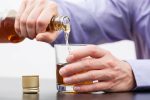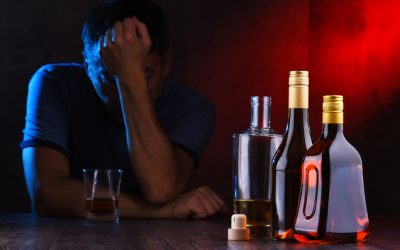The vagus nerve is a component of the parasympathetic nervous system marijuana addiction and is largely responsible for regulation of the heart rate at rest. Rossinen 1997 and Van De Borne 1997 reported withdrawal of vagal tone and reduced heart rate variability within an hour after alcohol consumption; this explains the increased heart rate. Buckman 2015, Van De Borne 1997, and Fazio 2001 also reported reduced baroreflex sensitivity following alcohol consumption. Impairment of baroreflex sensitivity results in failure to sense the increase in heart rate and maintenance of cardiovascular homeostasis.
Ueshima 1987a published data only
- Most of the included studies had similar risk of bias across all domains except for performance bias and detection bias, for which risk arises from blinding of participants, personnel, and outcome assessors.
- All outcomes of interest in the review (BP and HR) produced continuous data.
- Figure 3 summarizes the potential mechanisms underlying the cardioprotective and adverse effects of alcohol consumption.
Thus, low levels of alcohol consumption (1 to 2 drinks, but not every day) in patients with heart failure may not exacerbate the condition, especially in those with heart failure attributable to ischemic CHD. Because heart failure patients usually are older (over age 65) and often are prescribed numerous medications, both the effects of age and of medication use should be carefully considered by patients, clinicians, and researchers. More recently, Cosmi and colleagues (2015) examined the effects of daily wine consumption in subjects enrolled in an Italian trial of heart failure patients (mean age ~67), most of whom had reduced ejection-fraction heart failure.
Risk of bias in included studies
Vascular wall oxidative stress also is a key mechanism in ethanol-induced HTN. Oxidative stress is an imbalance between production of free radicals and the body’s ability to detoxify or fight off their harmful effects through neutralization by antioxidants. Various studies with animals and humans indicate that ethanol can increase the development of reactive oxygen species (ROS), leading to increases in redox-signaling pathways and decreases in protective antioxidant levels. Alcohol also can increase levels of co-enzymes or reducing equivalents (e.g., reduced nicotinamide adenine dinucleotide phosphate NADPH), which lead to increases in ROS formation and decreases in eNOS activity (Ceron et al. 2014). Several excellent reviews offer more detailed assessments of vascular cellular mechanisms (Cahill and Redmond 2012; Husain et al. 2014; Marchi et al. 2014; Toda and Ayajiki 2010).
Older man drinking beer
Go easy on the red wine if you have hypertension (high blood pressure) and take medication to treat it. Many medications interact with alcohol, and this includes medications used to treat high blood pressure. Overall, experts agree that red wine, like other types of alcohol, raises blood pressure. Each study had to does alcohol cause high blood pressure meet strict eligibility criteria, allowing researchers to focus on participants with no previous history of cardiovascular disease. This research was a dose-response meta-analysis of seven different nonexperimental cohort studies. Researchers looked at data from over 19,500 participants, allowing for vast information collection.

Chronic Systolic Congestive Heart Failure…

RCTs with measurements more than 24 hours after alcohol consumption are needed to see how long the effect of high‐dose acute alcohol consumption lasts. One common risk factor for CV disease is the composition of the lipids found in the blood, and the effects of alcohol consumption on lipid profiles have been extensively studied. Many researchers have found that alcohol intake increases HDL cholesterol (HDL-c) levels, HDL (“good cholesterol”) particle concentration, apolipoprotein A-I, and HDL-c subfractions (Gardner et al. 2000; Muth et al. 2010; Vu et al. 2016). High triglyceride levels in the blood stream have been linked to atherosclerosis and, by extension, increased risk of CHD and stroke. However, in a recently conducted Mendelian randomization study, Vu and colleagues (2016) reported that low-to-moderate alcohol consumption reduced triglyceride and LDL-c and increased HDL-c, in particular the HDL2-c subfraction. Interestingly, the researchers found a nonlinear effect of alcohol consumption on HDL2-c levels.
We included adult (≥ 18) participants of both sexes without any restriction on their health condition. CUnclear risk of selection bias and attrition bias in more than one study. AUnclear risk of selection bias and attrition bias in more than one study. To understand how much alcohol is too much, it may be helpful to know what excessive drinking means. Your doctor needs accurate readings to adjust medication dosages properly, making alcohol avoidance essential for safe treatment.
Pitsavos 2004 published data only
- Most of the included studies did not report the standard error (SE)/standard deviation (SD) of the mean difference (MD) for the outcomes of interest.
- Because women could be affected differently by alcohol than men, future RCTs in women are needed.
- Methodological differences between studies might have affected measurement of the reported outcomes.
This is unfortunate, as we have reason to believe that the effects of alcohol on BP might be greater in women. For medium doses of alcohol, moderate‐certainty evidence shows a decrease in SBP and DBP six hours after alcohol consumption, and low‐certainty evidence suggests a decrease in SBP and DBP for 7 to 12 hours after alcohol consumption. After ≥ 13 hours of consumption, SBP and DBP were raised; the certainty of evidence https://ecosoberhouse.com/ was low and medium, respectively.
